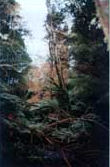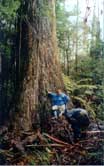Hancock Watch Home
Agnes River Agnes River Cool Temperate Rainforest and Wet Forest Buffers Protected (October 06)
Agnes Rainforest The Agnes River
headwaters contains some of the best mountain ash regrowth and cool
temperate rainforest remaining in the Strzeleckis. A tiny section of
these headwaters has been set aside as a flora and fauna reserve. Outside
the reserve some of the spurs and gullies have suffered damage in the
last 10 to 15 years, as forest has been cleared and spurs planted with
mountain ash, but the proportion that could be classified as plantation
is small. There remains large areas of native forest, mature mountain
ash and messmate and cool temperate rainforest. 
Within the rainforest, 4 rare rainforest species have been identified. They are; Tmesipteris elongata (A species of Forked Fem), River Hook Sedge, Slender Tree Ferns and Skirted Tree Ferns. Agnes Fauna The reserve is dominated by mountain ash regrowth, with many mature and old-growth trees. Outside the reserve there are large areas of native forest and some strips of young mountain ash plantation only 1 0 to 15 years old. The native forest consists of numerous pockets of mountain ash and messmate regrowth (containing a considerable number of mature-age trees with hollows) and extensive Blackwood forest. The Strzeleckis
has lost almost all its mixed age/mixed species eucalypt forest. If
what remains is not protected, all that will be left will be isolated
in the tiny pockets at Gunyah and Tarra Bulga. The areas at present
reserved are very small and are unlikely to be able to sustain a viable
population of the fauna that are dependent on mature-age trees. This
is likely to have a dramatic effect on the native fauna remaining in
the Strzeleckis. |
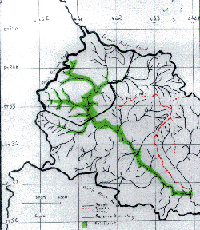
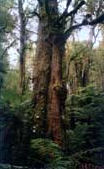
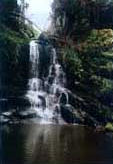 The rainforest is most extensive in the area within the reserve. It covers
the gullies along the main river course and along the full length of each
tributary, except at the southern-most end of the reserve where damage
to the tributary caused by logging and land clearing has resulted in most
of that tributary having only scattered myrtle beech trees. Below the
reserve there is extensive cool temperate rainforest along the main river
course, although there are a few small sections on the western side of
the river that have only scattered myrtle beech trees. These sections
coincide with those areas where logging activity, clearing and replanting,
has occurred over the last 10 to 15 years..
The rainforest is most extensive in the area within the reserve. It covers
the gullies along the main river course and along the full length of each
tributary, except at the southern-most end of the reserve where damage
to the tributary caused by logging and land clearing has resulted in most
of that tributary having only scattered myrtle beech trees. Below the
reserve there is extensive cool temperate rainforest along the main river
course, although there are a few small sections on the western side of
the river that have only scattered myrtle beech trees. These sections
coincide with those areas where logging activity, clearing and replanting,
has occurred over the last 10 to 15 years.. 